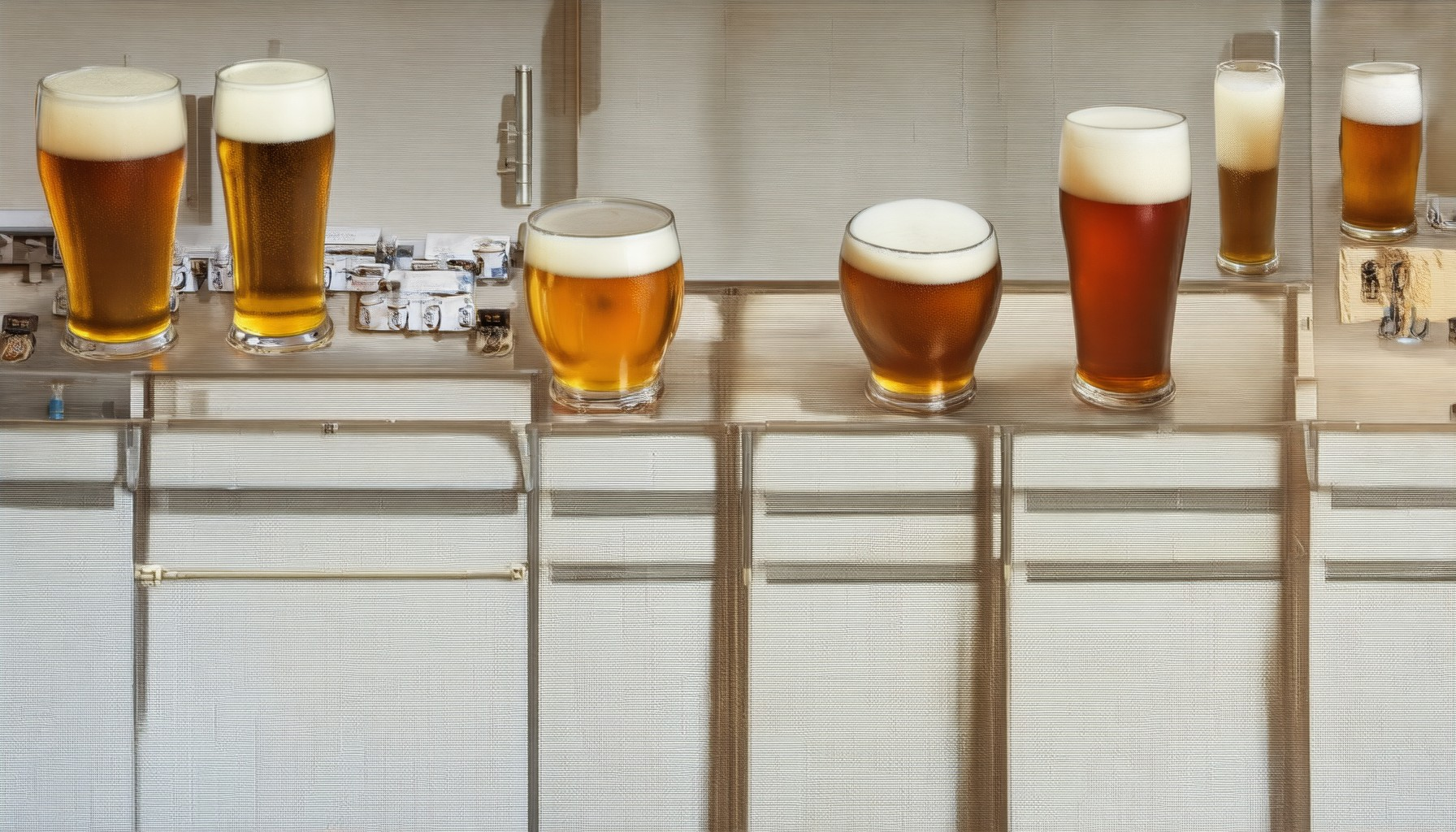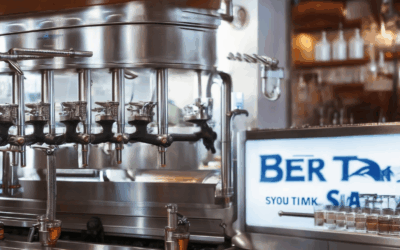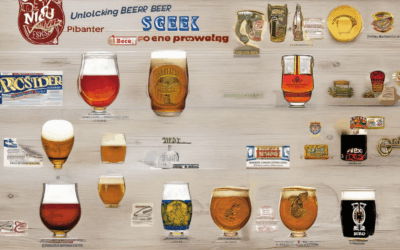Did you know that the beer industry generates over $100 billion annually, making it one of the most lucrative markets globally? For breweries, maximizing beer income is not just about selling more units but optimizing operations, increasing sales, and improving profitability. Whether you’re a seasoned brewer or just starting out, understanding the dynamics of brewery income and leveraging effective strategies can significantly boost your business success. This comprehensive guide dives into the key aspects of brewery profitability, exploring how much money beer makers generate, the trends shaping the industry, and actionable tips to maximize your beer income. From calculating annual revenue to navigating market trends and understanding profit margins, this article equips you with the knowledge needed to thrive in the competitive beer market. By implementing the insights discussed, you can unlock higher profits and secure your place as a successful player in the beverage industry.
Key Takeaways
– Beer Industry Generates Over $659 Billion Annually: The global beer market contributes significantly to the economy, with total annual revenues exceeding $659.57 billion in 2025, split evenly between at-home and out-of-home consumption.
– Profitability Varies by Beer Type: Domestic beer brands typically achieve profit margins of 20-25%, while craft beer producers enjoy higher margins of 35-45% due to premium pricing and niche market appeal.
– Factors Influencing Profit Margins: Production costs and distribution channels play crucial roles, with craft breweries benefiting from lower ongoing expenses and higher markup through specialized sales channels.
– Optimization Strategies: Focusing on high-margin products, establishing efficient distribution networks, and investing in brand building can significantly enhance profitability.
– Leading Breweries Drive Success: Major players like Anheuser-Busch InBev, Heineken, and MillerCoors dominate the market due to their global reach, advanced supply chain management, and strong marketing strategies.

How Profitable Is Beer?
The profitability of beer production and sales depends on several factors, including production scale, distribution channels, and market demand. Breweries typically operate on relatively high profit margins due to economies of scale and consumer demand.
Average Brewery Profit Margins
According to industry reports, the average profit margin for breweries producing beer and ales is approximately 45%. This margin reflects the cost efficiency of large-scale production and strong consumer demand for beer.
Factors Influencing Profitability
- Production Scale: Larger breweries often enjoy lower unit production costs, leading to higher profit margins compared to smaller craft breweries.
- Distribution Networks: Established breweries have well-developed distribution systems, reducing costs and increasing accessibility for consumers.
- Market Demand: Beer remains one of the most consumed alcoholic beverages globally, driving consistent revenue and profit opportunities.
- Competition: The presence of established players like major breweries can influence pricing and profit margins in the market.
Beer Industry Overview
The global beer industry is valued at over $500 billion annually, with significant contributions from both large corporations and craft breweries. The segment has shown steady growth, particularly in developing markets, further boosting profitability.
Profitability Compared to Other Alcoholic Beverages
Beer generally outperforms spirits and wine in terms of profitability due to lower production costs and higher volume sales. However, premium and craft beers command higher prices, contributing to increased margins.
Growth Prospects
The beer industry is expected to grow at a compound annual growth rate (CAGR) of around 5-6% over the next five years, driven by rising consumer demand and expanding markets.
For those considering entering the beer industry, combining a brewery with a taproom or restaurant can maximize profitability by leveraging both production and hospitality revenue streams.
The 3:30-300 Rule for Beer
The 3:30-300 rule for beer is a helpful guideline for optimizing both the temperature and freshness of your beer. Here’s a breakdown:
- Temperature : Serve your beer around 3:30 PM (afternoon) or at a temperature of approximately 45°F (7°C) to 50°F (10°C). This range ensures your beer is crisp and flavorful, enhancing both aroma and taste.
- Freshness : Drink your beer within 300 days of purchasing it. This timeframe ensures you’re experiencing the beer at its peak freshness, as it may lose flavor and carbonation beyond this period.
By following these guidelines, you can enjoy your beer at its best possible state, whether it’s during a relaxing afternoon session or paired with meals.

How Much Money Do Beer Makers Make?
The revenue and profit margins of breweries vary significantly depending on their size, location, and market position. Here’s a breakdown of the typical financial performance:
- Small Craft Breweries :
- Annual revenue typically ranges from $1 million to $3 million .
- Profit margins are often moderate due to high operational costs and competition.
- Mid-Sized Regional Breweries :
- Revenue can exceed $10 million annually , particularly those with strong distribution networks and a broad market presence.
- Profit margins improve as economies of scale reduce operational expenses.
- Macro Breweries :
- Large breweries, such as Anheuser-Busch InBev or Heineken, generate billions in annual revenue.
- Their profit margins are among the highest in the industry due to global distribution capabilities and extensive brand recognition.
Factors Influencing Brewery Profits:
– Production Volume : Larger breweries benefit from lower unit costs due to higher production scales.
– Distribution Networks : Efficient distribution channels significantly impact revenue and profitability.
– Pricing Strategies : Premium branding and higher prices can boost profit margins.
– Market Demand : Strong consumer demand for craft and premium beers drives revenue growth.
The craft beer market continues to grow, with total industry revenue exceeding $20 billion globally as of 2025. Successful breweries adapt to trends like sustainability and innovation to maintain profitability and market share.

How Much Money Does Beer Make a Year?
The global beer industry contributes significantly to the economy, with annual revenues reaching approximately $659.57 billion in 2025. This figure encompasses both at-home and out-of-home consumption:
- At-home consumption : Revenue generated through supermarkets, convenience stores, and other retail channels amounts to $348.56 billion in 2025.
- Out-of-home consumption : Revenue from restaurants, bars, and other social venues amounts to $311.01 billion in 2025.
These numbers highlight the widespread popularity and demand for beer across various consumer segments. The industry remains competitive, with major players like Anheuser-Busch InBev, Heineken, and MillerCoors leading the market. For more details on the global beer market, visit The Goods On Tap , your trusted source for craft beer insights and trends.
(Note: The figures referenced are based on market research and industry reports, reflecting the cumulative impact of the beer market in 2025.)
Profit Margins in the Beer Industry
The beer industry operates on varying profit margins depending on the type of beer produced and sold. Here’s a breakdown of the typical profit margins:
Domestic Beer Brands
Domestic beer brands, which include well-known names like Budweiser, Coors, and Miller Lite, typically operate on profit margins ranging from 20% to 25%. This margin reflects their economies of scale and established distribution networks.
Craft Beer Brands
Craft beer producers, on the other hand, often enjoy higher profit margins due to their premium pricing and niche market appeal. Craft beer margins generally range from 35% to 45%, driven by factors such as smaller production runs, unique flavor profiles, and strong consumer demand.
Factors Influencing Beer Profit Margins
- Production Costs: Craft breweries often have higher initial investment costs but benefit from lower ongoing production expenses compared to large-scale manufacturers.
- Distribution Channels: Craft beers are frequently sold through specialty bars, restaurants, and bottle shops, which may charge higher markup prices.
- Competition: While craft beers command higher prices, they still face competition from domestic and international brewers, which can affect overall profitability.
How to Optimize Beer Sales Profitability
- Focus on High-Margin Products: Offering seasonal or limited-edition beers can allow for premium pricing, increasing profit margins.
- Efficient Distribution Networks: Establishing strong relationships with reliable distributors can reduce operational costs and increase profitability.
- Brand Building: Investing in effective marketing and branding can help differentiate your product in the market, leading to higher selling prices and improved margins.
By leveraging these strategies, both domestic and craft beer producers can optimize their profitability and remain competitive in the dynamic beer market.

The Most Profitable Beer
The most profitable beer brand globally is often debated, but several breweries stand out due to their market dominance, extensive distribution networks, and premium positioning. Among these, Anheuser-Busch InBev, parent company of iconic brands like Budweiser, Stella Artois, and Corona, consistently ranks among the top due to its global reach and strong marketing capabilities.
Corona, a popular lager beer produced by AB InBev, has been recognized as one of the most valuable beer brands worldwide. Its consistent quality and widespread availability contribute significantly to its profitability. Similarly, Heineken, another major player, boasts a robust international presence and a reputation for excellence, making it a formidable competitor in the premium beer market.
MillerCoors, based in the United States, holds a significant market share domestically and operates internationally through partnerships, further solidifying its position as a financially successful brewery. These brands leverage advanced supply chain management, efficient production processes, and strategic marketing to maintain their profitability.
For more details on the beer industry and its leading players, explore The Goods On Tap , a comprehensive platform dedicated to craft beer insights and industry trends.
Conclusion
The profitability of beer brands largely depends on factors like market saturation, distribution channels, and brand loyalty. Companies like AB InBev, Heineken, and MillerCoors excel in these areas, driving their financial success.





0 Comments